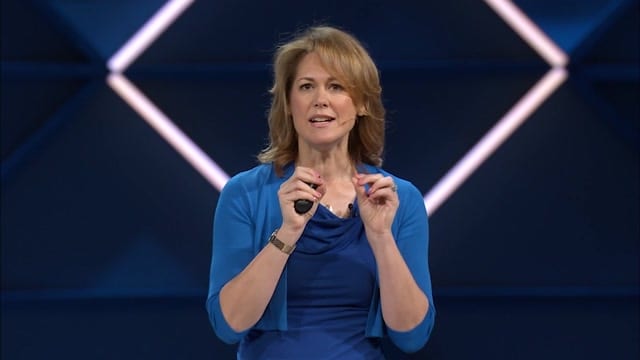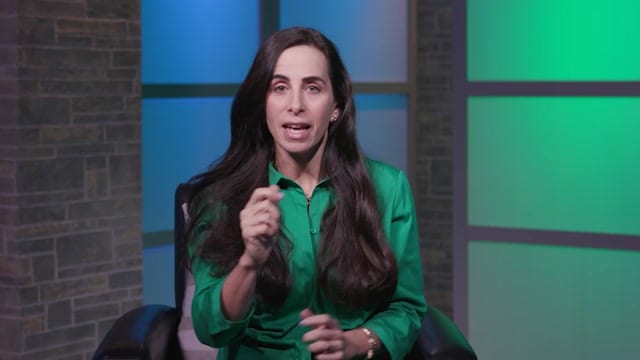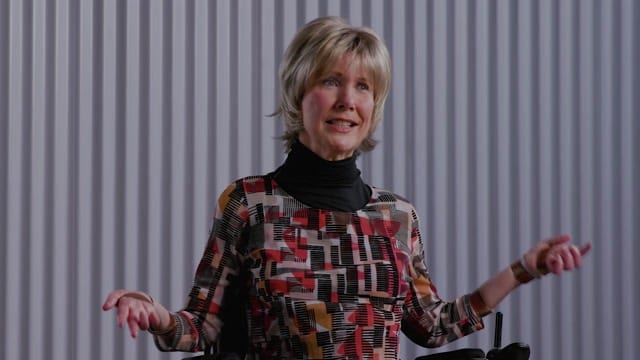
Angela Ahrendts, recently named one of the world’s most powerful women, is influencing the world of retail through her role at Apple. We are honored to welcome her to the 2018 Global Leadership Summit faculty.
Ahrendts may not have taken a typical path into the tech world, but she’s quickly become one of the most important and highest-paid executives at Apple.
She joined Apple in 2014 as head of retail, filling a position that had been vacant for more than a year. At the time, the tech world was surprised. Ahrendts didn’t have a background in tech and previously had been her own boss; she joined Apple from British fashion house Burberry, where she served as CEO for eight years.
Here’s how she rose from her place of origin in a small town outside Indianapolis to becoming an executive at one of the most valuable companies in the world…
1) Ahrendts grew up in New Palestine, Indiana. One of six kids in her family, she was a cheerleader in high school, played tennis and volleyball, and also did gymnastics. Ahrendts’ athletic prowess may in part be due to her height—she’s just under six feet tall.
2) As a kid, she sewed her own clothes and dreamed of joining the fashion industry. “It was always fashion. If you read my high school yearbook, I was [someone] who, at 16, knew exactly what I was going to do,” she told The Guardian.
3) Ahrendts attended Ball State University in Indiana. The day after her final exams, she moved to New York City, leaving on a one-way ticket.
4) She got her start in sales, working for a menswear company. She then moved to merchandising at bra maker Warnaco, and in the late 80s, served as president of Donna Karan International for six years.
5) In the mid-90s, Ahrendts worked at Henri Bendel and was charged with expanding its number of stores. Ahrendts’ job was to open Bendel stores in 50 new markets, but the company’s board eventually cancelled the project.
6) In 1998, she joined Liz Claiborne. She spent eight years there, eventually working her way up to executive vice president.
7) Ahrendts became CEO of Burberry in 2006 and immediately went to work revitalizing the company. Her first order of business was shutting down 35 product categories, many of which featured Burberry’s famous check pattern. The company’s brand had been over-licensed through the years, diluting its value.
8) During her tenure at Burberry, she pushed the company to adopt new technologies. Under her leadership, Burberry embraced e-commerce and updated their in-store technology. Ahrendts also launched new product lines, and the company’s retail operations expanded into new markets.
9) Ahrendts moved her family to the United Kingdom when she joined Burberry. Rather than living in a townhouse in London, the family opted for a 12,000-square-foot manor house in the suburbs, complete with a tennis court and indoor pool.
10) Ahrendts met her husband, Gregg Couch, in elementary school; they’ve now been together for 40 years. The couple had a 17-year long-distance relationship while she was living in Manhattan and working 80 hours a week. Couch eventually moved to New York, and he and Ahrendts were married in their 30s. Couch started his own contracting business after moving to New York, but he gave it up when Ahrendts took over as CEO of Burberry, becoming a stay-at-home dad.
11) Ahrendts has three children. Her son, Jennings, is an aspiring musician. Her other two children are daughters—Sommer and Angelina. Family is important to Ahrendts. She once turned down an invitation to the Oscars to spend more time at home.
12) She wakes up at 4:35 every morning but doesn’t use an alarm clock.
13) In 2014, Ahrendts was named an honorary Dame Commander of the British Empire. She received the honorary DBE title for her contribution to British business. During her tenure at Burberry, the company’s stock price more than tripled.
14) In April 2014, she became executive vice president of retail at Apple. The tech giant tasked her with revamping its stores and improving employee morale. She was also charged with making the buying process at its outlets feel more like a luxury experience, improving how the digital and brick-and-mortar shopping experiences were merged.
15) Ahrendts was a fan of Apple even before she joined the company. “If I look to any company as a model, it’s Apple,” she told the Wall Street Journal while still serving as Burberry’s CEO. “They’re a brilliant design company working to create a lifestyle, and that’s the way I see us.”
(This article originally appeared here.)
 Angela Ahrendts is responsible for strategy, real estate & development and operations of Apple’s physical stores, online store and contact centers. Since joining Apple in 2014, she has integrated Apple’s physical and digital retail businesses to create a seamless experience for more than a billion visitors per year, with the goal of educating, inspiring, entertaining and enriching communities. Prior to Apple, Ahrendts served as CEO of Burberry, leading the company through a period of outstanding global growth.
Angela Ahrendts is responsible for strategy, real estate & development and operations of Apple’s physical stores, online store and contact centers. Since joining Apple in 2014, she has integrated Apple’s physical and digital retail businesses to create a seamless experience for more than a billion visitors per year, with the goal of educating, inspiring, entertaining and enriching communities. Prior to Apple, Ahrendts served as CEO of Burberry, leading the company through a period of outstanding global growth.













Recent Comments